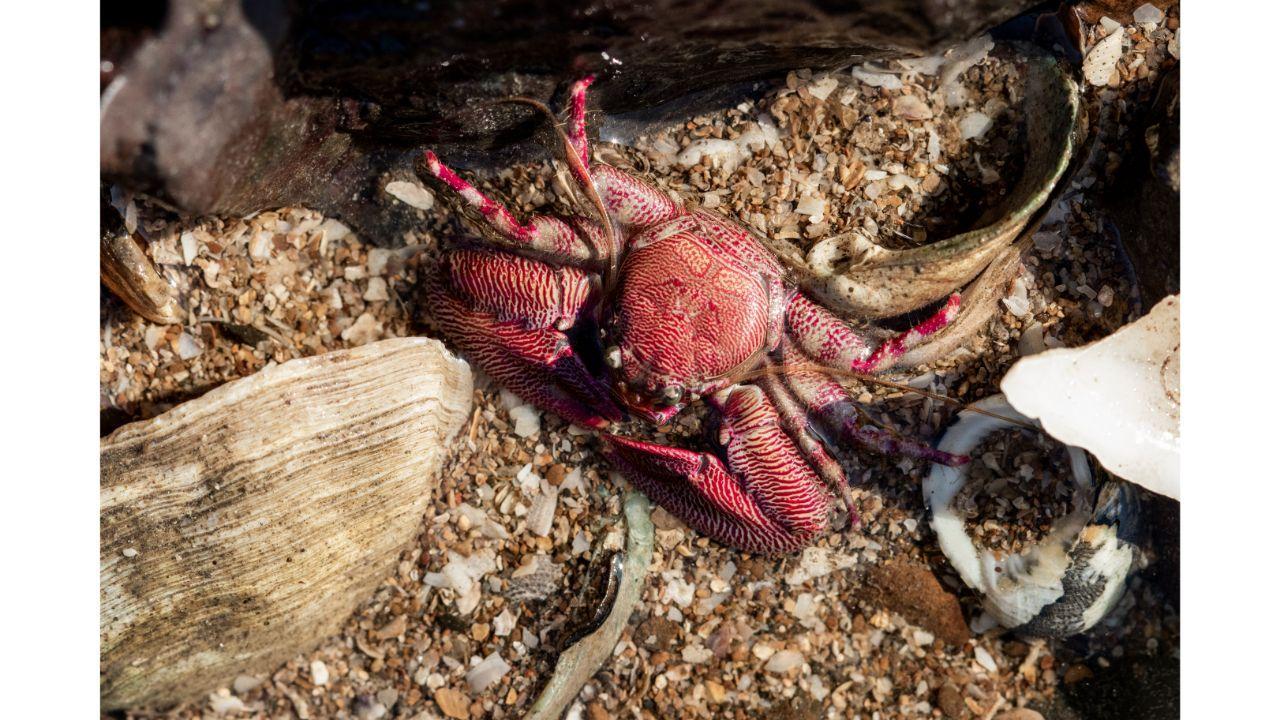What began as a Facebook group for marine life fans has become a movement with walks, events, and serious documentation. Shaunak Modi of 'Marine Life Of Mumbai' takes us through four years of surveying the city's sea creatures

Porcelain Crab. Pic Credit/Shaunak Modi
The sea continues to surprise Shaunak Modi, even four years after he first began documenting Mumbai’s abundant yet overlooked marine life. “There are these animals called 'sea slugs’. We never expected them to be here but we found about 45 to 50 species of them — from Juhu to Marine Drive,” says the nature photographer. He is an early member of ‘Marine Life of Mumbai’, a group that has been conducting walks on the city’s rocky and sandy shores, allowing people aged between six and 60 to take in its underwater treasures. Over the course of these trips, the motley team of nature enthusiasts has managed to document over 450 species of marine life that live in the sea shore.
Started by Pradip Patade, a water sports instructor, Abhishek Jamalabad, a marine biologist and Siddharth Chakravarty, an academic fisheries researcher, Marine Life of Mumbai had its beginnings on Facebook. Modi joined in the first six months. The volunteers soon extended their outreach to other social media platforms and began conducting their now-famous walks and events in February 2017.
Where most Instagram pages exist for the purpose of posting attractive pictures that grab attention, Marine Life Of Mumbai uses the medium with deeper intentions. By posting breath-taking photographs of sea creatures, the page is showing people how the local waters are home to whip-rays (a fish with a disk-like body and slender whip-shaped tail), hermit crabs (which can’t grow their own shells and move into empty mollusc shells), and sea urchins (small, round and spiky creatures).
Cup Corals. Pic Credit/Shaunak Modi
These posts are shared with facts that are grounded in scholarship but free from any boring scientific jargon. “For every post, we go through research papers and available literature, and simplify that for a larger audience. For example, the porcelain crab, it gets its name because it is really delicate. It lets go of its claws, in case it feels threatened,” explains Modi. This seems to be working. The page now boasts more than 8,000 followers on Instagram and more than 400 striking images of marine creatures.
So how do they curate the photographs? Most of the members, including Modi, are wildlife photography enthusiasts. “The documentation we do requires us to have these detailed photographs of animals. So, a major chunk of the photos and text come from within the team,” he informs. However, they have opened this up to the wider community of followers, from whom they source one photograph and description each month. Though it was founded as a collective, four of the core team members formed a non-profit organisation called Coastal Conservation Foundation in 2019 and went on to win a couple of grants.
That brings us to another dimension of Marine Life of Mumbai's work: data documentation. When they started out, there was no baseline data, and no public resources for the marine biodiversity of the city. Modi shares, “We created our database on a website called iNaturalist.org. All of our data is open source. Anyone can download it, including the photos by the core team, which are shared with the creative common license and can be used for non-commercial purposes.” It has generated a lot of interest within the research and academic community who have cited this data in dissertations and also used it to map out walks on the shore. “It is being used as a reference for a lot of things and that is the idea we had in mind; for it to be used by anybody.”
Shaunak Modi
Of course, the ongoing pandemic has thrown a spanner in the works for the group. Before the lockdown, 50 percent of their outreach programme relied on online initiatives and 50 percent on walks. “Even when things started opening up a bit post late last year, we could conduct walks with groups of only five to 10 people while earlier there used to be groups of 25 or so,” Modi says. Meanwhile, the walks continued, except on virtual shores this time. Sejal Mehta, who is the editor and writer for Marine Life of Mumbai, came up with the idea of going digital with the walks. Modi elucidates, “We went back to our archives and brought out whatever photographs we had … Each photo was accompanied by some text and we did that for every single shore we have conducted walks on.”
As soon as the lockdown is lifted, the plan is to resume documentation to see how the shore has changed. “We have lost an entire season last year for documentation.” As for as future plans go, they aim to replicate this model in other parts of the city and country. “There are shores in North Mumbai which we have not documented very well. So we need to start there and also continue documenting South Mumbai shores.” Surely, the sea holds more surprises.
 Subscribe today by clicking the link and stay updated with the latest news!" Click here!
Subscribe today by clicking the link and stay updated with the latest news!" Click here!









